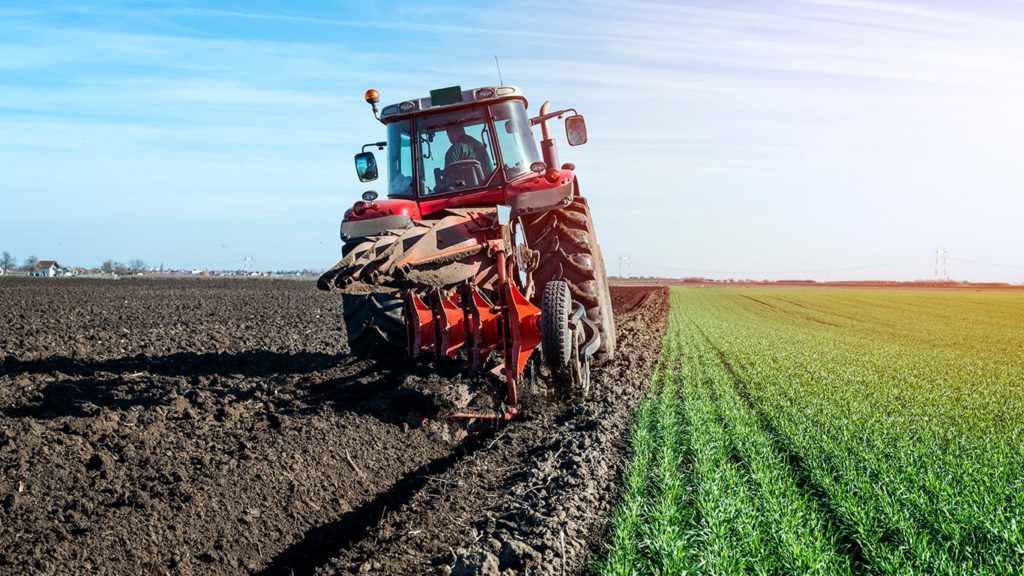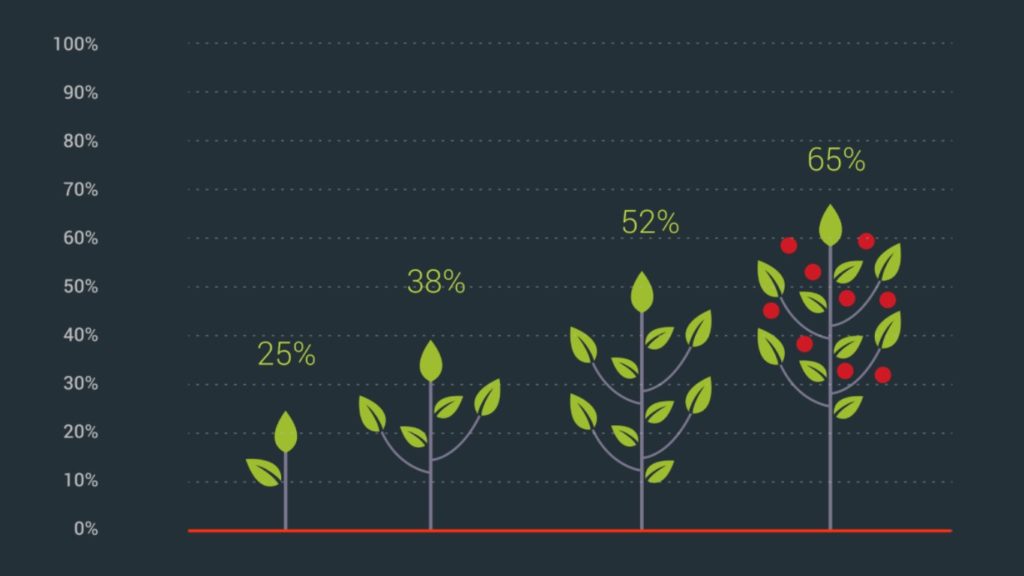
You will be amazed if you look at the progress technology has brought into the agricultural sector. It has been a blessing for farmers across the world. It has not just helped farmers to make better agricultural decisions but has also provided them with tools to carry out agricultural activities easily. Farmers can save more resources and time now using technology. They are grateful for the technology that has made them more self-sufficient. They can now make informed decisions and prioritize the quality of the food they produce.
Quick Answer: How Technology is Integrated in Agriculture?
Technology is integrated in agriculture through various means such as precision farming, IoT sensors, drones, AI-driven analytics, and automated machinery to enhance crop yield, reduce resource waste, and improve overall efficiency.
Highlights
- Technological advancements have greatly improved decision-making and efficiency in farming.
- Green technology, born in the mid-20th century, addressed the need to boost food production in developing nations.
- Pesticides, herbicides, and fungicides were developed to combat pests, plants, and fungi.
- Agricultural machinery, like tractors, significantly increased food production and farming efficiency.
- Modern tech allows farmers to manage farms without needing family help.
- Tech integration in agriculture reduces workplace injuries and improves crop quality through automation.
- Sensors and IoT devices help predict weather patterns, reducing costs and optimizing crop management.
- Big Data analysis aids in crop selection, harvest timing, and pesticide use, minimizing environmental impact.
- Biotechnology is used to develop crops with desirable traits, such as pest resistance.
- Comparison between traditional and technological farming emphasizes the benefits of automation, efficiency, and reduced environmental impact.
- Future agricultural technology trends include AI-driven smart farming, CRISPR gene editing, and blockchain for food traceability.
- Technological advancements in agriculture have transformed the industry, promising a future of sustainably produced, high-quality food.
When did Technology come into the Picture?
We started our discussion right by thanking technology for its help in the agricultural sector. Now, let’s look at how it started. We were experimenting with technology in the mid-20th Century, hoping to solve our existing problems. This gave birth to green technology. We will understand what green technology is all about.
The population of developing nations was growing and finding a solution to feed them was a priority. Technology was used to develop new methods of irrigation and managing crops. The results of this development were that the developing nations started to become self-sufficient in food production.

So, you see when faced with problems, how do we use technology to develop solutions to them? When talking about the agricultural sector, a few things that come to our mind are pesticides and tractors. We need to control pests, otherwise, it will damage our crops. For this reason, lots and lots of pesticides are sprayed, injected, and added to the fields. We have different types of pesticides as well, to kill insects, we have insecticides.
Similarly, we have herbicides and fungicides for plants and fungi respectively. Using technology, we are developing pesticides that control pests and safeguard crops.
We visualize farming always with the famous agricultural machinery that is the tractor. How would we produce crops in larger quantities if we didn’t have them? It has saved farmer’s time so much that now they can increase their farm size and food production. The lives of farmers have changed for the better with technology.
Previously, farmers expected their family members to stay with them to help them with farming. Now, with modern agricultural technology, family members can pursue their passion and farmers can still manage their farms easily without them. Also, we are looking to move forward from here and innovate agricultural technology more with time.
Integration of Technology in the Agricultural Sector
We have seen how technology was integrated into the agricultural sector. Now, we will see how exactly it was done with examples and what are the results.
Monitor and Control Food Production
Farmers are using technology to monitor and control their farm production. Back in the day, farmers had to carry out farm activities manually. They had different sets of problems at that time. Finding a dedicated workforce was their major concern. Thanks to technology, these problems are taken care of. Technology has provided us with robots and machines that have replaced the workforce.
Farmers can now focus on the quality of their crops. Using technology, we can increase food production and keep them fresh. Technology has also reduced workplace injuries in this sector. For example, consider the robots used in butchery. With the help of this technology, many workplace injuries were eliminated. And, this has created a safer work environment in the agricultural sector.
Weather and Climate Prediction
We have sensors now that predict the needs of the crops. The benefit of using technology to predict weather and climate is that the farmers can cut their costs. Along with cost-cutting, they can also produce more crops, and monitor their water needs. In simple words, farmers are using this technology to collect data and make informed decisions regarding watering and using pesticides for their crops.
We use IoT devices to continuously collect data on farms and monitor them using smart devices. Some of the data that we collect are humidity, temperature, air pressure, wind speed, wind direction, and rainfall. These data are then analyzed based on the duration and accordingly, the next agricultural activities are decided.
For those who don’t know, the following video outlines how weather forecasting works:
Big Data
We collect data so that we can analyze them to study patterns and make the right decisions. Big Data helps farmers to make decisions regarding the selection of crops to plant and the time of harvest to improve their farm yields. There are side effects of pesticides and when used without caution, they can harm the ecosystem. Big Data helps the farmers decide which pesticide to use to kill the pests and at the same time protect the ecosystem.
Big Data keeps track of the farm equipment. This is especially useful for farmers who have big farms. With this technology, they can keep the track of equipment that needs refills and maintenance. The focus of the agricultural sector is to bridge the gap between the demand and supply of food production. Technology helps to manage the supply chain and prevent wastage of food.
Biotechnology
We have biotechnology that helps the agricultural sector to develop better crops. These crops are developed in the lab. Several factors are considered while developing them. Some of these factors are resistance to pests and environmental stresses, and durability. The genes are inserted into crops to modify them. This includes giving crops favorable traits.
Who wouldn’t want to develop crops that have nutritional qualities and are less dependent on pesticides for their growth? And, when we have biotechnology, why not make the most of it?
Comparison between Traditional and Technological Farming Methods
| Aspect | Traditional Farming | Technological Farming |
|---|---|---|
| Labor | Requires a large labor force | Automation reduces labor needs |
| Efficiency | Lower efficiency due to manual processes | High efficiency due to automated processes |
| Cost | Lower initial cost, but higher long-term costs due to inefficiencies | Higher initial investment, but lower long-term costs due to efficiencies |
| Environmental Impact | Potential for high environmental impact | Technologies can significantly reduce environmental impact |
| Yield | Variable yield depending on weather, pests, etc. | Consistent and potentially higher yield due to controlled conditions |
Future Trends in Agricultural Technology
Looking ahead, it’s really exciting to see what’s on the horizon for farming tech. Here are a few possible game-changers:
- Smart Farming with AI: Think about AI not just predicting weather patterns or crop yields, but also sending out robot workers to take care of things like picking the apples or feeding the chickens.
- Gene Editing with CRISPR: Picture this – instead of waiting generations to breed the perfect tomato, we could use this cool gene-editing tool to speed up the process and get those juicy, robust tomatoes out to market faster.
- Track Your Food with Blockchain: As people want to know more and more about where their food comes from, blockchain could step in to give them the whole story, from the farm to the grocery store shelf.
Conclusion
Don’t you think that the changes technology has brought into the agricultural sector are fascinating? The results say it all. What’s more amazing than seeing the growth in the agricultural sector from a bunch of workers on the farm to automated large-scale farming, that too within a shorter duration? Also, if you look at this sector, you will see that they are developing more advanced technologies. These technologies have the potential to forever change the way we see farming and provide us with quality food.